Harry T. Roman's Blog, page 23
October 22, 2013
Book Signing – “Edison and the Rise of Innovation” by Leonard DeGraaf; Foreword by Bill Gates
WHERE: The Edison National Historical Park, 211 Main Street, West Orange, New Jersey 07052
WHEN: Wednesday, October 30, 2013 @ 6:30 p.m.
—–
Refreshments will be served. Books can be purchased at the Edison Book Store on location. Come one, come all!
About the Author
Leonard DeGraaf is an archivist at Thomas Edison National Historical Park. Before joining the National Park Service in 1991, he was on the staff of the Thomas A. Edison Papers. DeGraaf is the author of Historic Photos of Thomas Edison (Turner Publishing, 2008), and his articles have appeared in the New York Daily News,Seaport magazine, and Business History Review, among other publications. He received an MA in history from Rutgers University.
“Edison and the Rise of Innovation” Book Trailer
September 23, 2013
Bill Gates Salutes Thomas Edison
In a Foreword to a new book, “Edison and the Rise of Innovation” about Thomas Edison, Bill Gates salutes Edison with these words:
“In the pantheon of American innovation Thomas Edison holds a unique place”
“He certainly has been an inspiration to me in my career. I am lucky enough to own a few pieces of Edison memorabilia…”
“Thomas Edison remains a powerful exemplar of creativity, perseverance and optimism…” [Bill Gates - Edison and The Rise of Innovation]
“Edison and the Rise of Innovation” is a collaboration among the Charles Edison Fund and Edison Innovation Foundation, Sterling Publishing, the National Park Service and is written by veteran author, Leonard DeGraaf, archivist at the Thomas Edison National Historical Park in West Orange, New Jersey. On September 25 (Wednesday), the book will be available in Barnes & Noble books stores and on their web site at www.barnesandnoble.com.
This important new book already has a very big fan, Bill Gates, who penned the Foreward.
People know Edison for his 3 major inventions, the electric light bulb and the power industry, the phonograph and the motion picture camera, but the great inventor also was a brilliant entrepreneur who knew how to bring his innovative ideas to the marketplace.
Over the course of his long career, Edison organized and managed dozens of manufacturing and marketing companies. In the process of adopting new production and sales strategies, he helped create a mass consumer market in the late nineteenth and early twentieth centuries; and also branding himself in the process. From his modest roll-top desk in his invention factory office/library, Old Tom routinely managed about 40 new product development teams and 30 companies that supported his operations and sold his products. If that is not an operational definition of an innovator, what is!
The crisp text and explanations by Author DeGraaf are fun to read and the photos in the book are illuminating. This book is a keeper. You STEM teachers out there…make sure you get a copy in your school library or for your classroom. Edison is the “STEMeister”, the taproot of team-based, multidisciplinary problem solving.
A copy of the book can be purchased now on Barnes & Noble website.
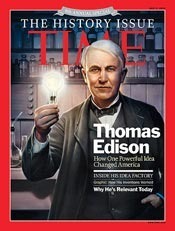 Thomas Edison said … “If we all did the things we are really capable of doing, we would literally astound ourselves….”
Thomas Edison said … “If we all did the things we are really capable of doing, we would literally astound ourselves….”Time ® is a registered trademark of Time Inc.
September 14, 2013
Google Buys Waze – for Traffic Control

A not so happy end to a long day at the office!
There are about 250 million cars on the road, and if they behaved differently, that would mean some significant environmental benefits.
Waze, an Israeli start-up, recently acquired by Google for an estimated $1 billion, is an app that helps drivers avoid traffic jams-thereby saving time and fuel costs; and probably avoiding driver stress and anxiety.
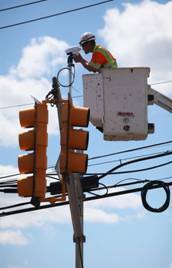
A camera adjustment on a smart traffic signal
At the University of Toronto, research is showing how artificial intelligence techniques can make traffic lights smart, self-learning from traffic pattern, and thereby allow traffic to move more smoothly on the streets. The work thus far has shown such intelligence has reduced travel times by 25%; and lowered carbon-dioxide emissions by 30%-and all that with only 59 traffic signals equipped for intelligent processing.
We can think of this as the emergence of the “smart road”, how we maximize the efficiency of moving along the roadways. This is analogous to what we know as the “smart grid”, the ability to move electricity cleanly, reliably, and efficiently along the pathways of electric utility systems.

A road train; a double truck and three cars
How about the possibility of road trains…cars, trucks, and other vehicles linked together to travel a major arterial roadway? Maybe a professional driver is the “engineer” of this train while the other drivers simply sit there in their vehicle and enjoy the ride, read, or maybe conference call en route. Such trains have been tested in Europe at speeds of 55 mph, with measurable environmental benefits- better fuel economy because of better aerodynamics (i.e. reduced drag on individual vehicles).
What about car-sharing programs where drivers can locate unused cars in their area and rent them to move around? Whip out that smart phone, locate a dormant vehicle, sign-up to use it, unlock it via a special code, and off you go. Drop it off when done at a car-share station and you are done. Why own cars when you can rent one as needed. Keep this in mind, you only occupy your car a mere 4% of the day-if that. Think what it costs to own, maintain, and insure a car. This might be a very viable option for urban dwellers.
What you ask may be coming next? Researchers are working on driverless cars, electric vehicles that feed excess battery power back into the grid during utility emergencies, swap-out batteries for electric vehicles so battery charging time-outs are bypassed for long-distance travelers, and much more!
Editor’s Deep Dive
http://www.sartre-project.eu/en/Sidor/default.aspx
http://individual.utoronto.ca/klyons/files/INF1003-smart-transportation-case.pdf
http://www.waze.com/
 Thomas Edison said … “Many of life’s failures are experienced by people who did not realize how close they were to success when they gave up.”
Thomas Edison said … “Many of life’s failures are experienced by people who did not realize how close they were to success when they gave up.”Time ® is a registered trademark of Time Inc.
August 26, 2013
The “Hyperloop” by Elon Musk – in the Spirit of Thomas Edison
Hint: It’s been described as a cross between a Concord transatlantic airplane, a bullet train, and an air hockey table; and it can propel things at the speed of sound. Know what it is?
Another hint: It is proposed to be a solar-powered, earthquake-resistant, pod-based transportation system for humans. Any idea?
It’s the dream of Tesla chief executive, Elon Musk (top-rated electric car manufacturer), a transportation system that could whisk passengers from San Francisco to Los Angeles in 30 minutes. Price tag … $6 billion … and 10 years to build. Musk calls it the “Hyperloop”; and the transportation pods would be run on the induction motors now powering the Tesla Motors’ Model S electric car.
This Elon Musk fellow knows something about disruptive technologies, seeing how he has the following notches in his technology implementation belt:
PayPal
Space Exploration Technologies (SpaceX-space launch vehicles)
Tesla Motors
SolarCity; and now
Hyperloop
Is this Hyperloop concept controversial? You bet. Does it deter Innovators like Musk? Not at all. These “icon smashers” follow in the footsteps of great disruptive innovators like Thomas Edison, Steve Jobs and Henry Ford, to name a few. People who are not afraid to think big and change the basic paradigms of whole industries, and create new ones; people who exemplify thinking outside-the-box….people who probably never even knew there was a box in the first place. What characterizes these great disruptors is their entrepreneurial drive to bring new inventions to market-to make them real, and to make money. Edison said it right, “I invent so I can make money and keep on inventing.”
Editor’s Deep Dive
http://www.businessweek.com/articles/2013-08-12/revealed-elon-musk-explains-the-hyperloop
http://www.spacex.com/hyperloop
http://en.wikipedia.org/wiki/Elon_Musk
 Thomas Edison said … “Hell, there are no rules here – we’re trying to accomplish something.”
Thomas Edison said … “Hell, there are no rules here – we’re trying to accomplish something.”Time ® is a registered trademark of Time Inc.
August 12, 2013
A Disruptive Technology Thomas Edison Would Have Loved: The Internet
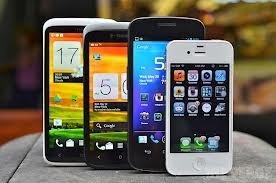 About 40% of the world’s population is now using the Internet, a far cry from the original .5% in 1995; and the Internet is not just available on PCs and such. It is right there on your phone and other hand-held devices, making its use even wider, and faster. Whether you are looking for information or map locations, or where to have dinner, the Internet is at your beck and call 24/7/365. How did we ever survive without it? When was the last time you or your family went to or called the local Library for information?
About 40% of the world’s population is now using the Internet, a far cry from the original .5% in 1995; and the Internet is not just available on PCs and such. It is right there on your phone and other hand-held devices, making its use even wider, and faster. Whether you are looking for information or map locations, or where to have dinner, the Internet is at your beck and call 24/7/365. How did we ever survive without it? When was the last time you or your family went to or called the local Library for information?
You can learn more about the Internet’s history from the references below [Editor’s Deep Dive]. Check out the growth in Internet users in the chart here.
1995 – 16 million users
2000 – 351 million users
2005 – 1,018 million users
2010 – 2,267 million users
2013 – 2,749 million users
Think of the changes wrought in the last 18 years. Our entire way of doing business has been completely shifted from brick and mortar stores to electronic transactions, with shipping right to your front door. Our schools are racing to keep up with this technology as they teach students the 21st century skills they will need to survive in a global economy. The new mantra in the schools is STEM-Science, Technology, Engineering and Math; with a heavy dose of team work, computer skills, hands-on projects, and open-ended problem solving—all preceded with a researching of important topical aspects of their projects via the Internet.
Colleges routinely assign and gather student work projects via the Internet through academic electronic portals at each school. Students even do projects in teams with other students from all over the globe. Now we have the possibility of a great leveling of the collegiate field through Internet delivered MOOCS- Massive Open, On-Line Courses. Students all over the globe would be able to attend college from their local sites using advanced electronic software. Think how this could affect the world. What a way to reduce high collegiate tuition costs!
“Each Internet job supports approximately 1.54 additional jobs elsewhere in the economy, or roughly 2 percent of employed Americans.” -Harvard Business Review
Corporations do all their work via the Internet now, including the administration of benefits for employees. It is no longer what you own as a company that is important, but rather what you know; and how fast you can do something strategic in the marketplace with it. The Internet is the enabler for doing business-fast and efficiently. A company is only as good as the computer analysis skills of its employees.; and its ability to gather and analyze information from all over the world.
The First Computer-ENIAC [ca. 1940s]
Sure, along with any technology comes tough choices and problems that must be dealt with. In this case we have identity theft, electronic espionage, hacking, terrorist use of the Internet, scams, and other problems such as spying on citizens. However, most would agree the benefits of the Internet, and its spread to other portable devices have been a tremendous benefit to our society. We have come a long way since the first computers, and what we are now able to do with the many “Apps” available to us.Think about the many governmental changes witnessed in overseas countries in the last few years. Much of this has been fueled by the ability for almost instant communications, showing oppression and abuse at the hands of corrupt regimes. Evil is having a harder time lurking in the shadows and this is a good thing.
Thomas Edison literally worshipped the gathering and analysis of scientific and technological data. It was a compelling reason for locating his business office in his company library, for here he could have the world’s information at his fingertips. Imagine what he could have done in this day and age with the incredible access to information we have!
Editor’s Deep Dive
http://www.internethalloffame.org/brief-history-internet#Origins
http://www.zakon.org/robert/internet/timeline/
http://www.internetworldstats.com/emarketing.htm
http://money.cnn.com/2012/03/19/news/economy/internet_economy/index.htm
http://hbswk.hbs.edu/item/6268.html
 Thomas Edison said … “I always invented to obtain money to go on inventing.”
Thomas Edison said … “I always invented to obtain money to go on inventing.”Time® is a registered trademark of Time Inc.
July 29, 2013
UConn Boosts Solar Power in a Big Way
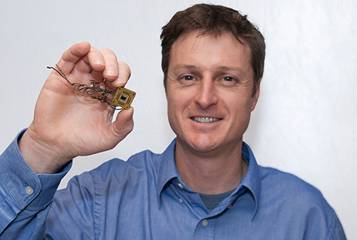 The key to increasing solar performance appears to be going small … very small … nanotechnology.
The key to increasing solar performance appears to be going small … very small … nanotechnology.
Researchers at UConn’s engineering campus have developed incredibly small antennas capable of harvesting over 70% of the sun’s energy, converting it to useful electricity. The best existing commercial solar-electric [photovoltaic] panels can convert about 20% of the sun’s incoming solar radiation to electricity. Cost of the panels and their low efficiencies long have been tough roadblocks to the wide-spread commercialization of solar energy systems. The folks at UConn are hot on the trail to improve solar economics.
The tiny antenna developed under the guidance of Dr. Brian Willis and his team at UConn are known as “rectennas” because they can absorb the electromagnetic spectra and rectify it directly for use. All this absorption and rectification of solar energy occurs between tiny electrodes spaced at distances 30,000 times smaller than the diameter of a human hair. That is Dr. Willis pictured above-holding an antenna assembly. shown below is an illustration depicting the nano-sized technology–the antenna and rectification components.
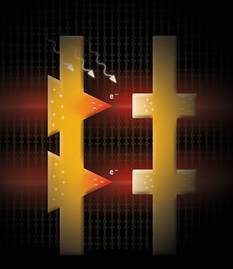 The rectennas are able to convert both the visible portion of sunlight as well as the infra-red component. Traditional solar panels today can only absorb the visible portion of sunlight. Just for the record, of the solar energy coming to planet earth, about 45% we see as visible light; 45% is in the infra-red part of the spectrum, which we perceive as heat; and 10% is ultra-violet in nature – the high energy part that gives us sunburn. The rectennas can be made, or tuned, to absorb any part of the spectrum, thereby radically increasing overall panel efficiency and lowering cost.
The rectennas are able to convert both the visible portion of sunlight as well as the infra-red component. Traditional solar panels today can only absorb the visible portion of sunlight. Just for the record, of the solar energy coming to planet earth, about 45% we see as visible light; 45% is in the infra-red part of the spectrum, which we perceive as heat; and 10% is ultra-violet in nature – the high energy part that gives us sunburn. The rectennas can be made, or tuned, to absorb any part of the spectrum, thereby radically increasing overall panel efficiency and lowering cost.
This is big news indeed and something Thomas Edison would have loved. He was a solar enthusiast long before folks were talking about solar applications for buildings-see his quote below.
Go UConn!
Editor’s Deep Dive
http://today.uconn.edu/blog/2013/02/uconn-professors-patented-technique-key-to-new-solar-power-technology/
http://www.atissun.com/blog/17963/uconn-professor-developing-nano-solar-technology-prototype/
http://green.tmcnet.com/channels/solar-power/articles/325939-new-solar-technology-now-under-development-uconn-could.htm
 Thomas Edison said … “I’d put my money on the sun and solar energy. What a source of power! I hope we don’t have to wait until oil and coal run out before we tackle that. I wish I had more years left.”
Thomas Edison said … “I’d put my money on the sun and solar energy. What a source of power! I hope we don’t have to wait until oil and coal run out before we tackle that. I wish I had more years left.”Time ® is a registered trademark of Time Inc.
July 23, 2013
Guest Blog: UV LED for Revolutionizing Water Purification
Thomas Edison’s most iconic invention was the incandescent bulb, in use since the 1880s. Today, LEDs, are entering the world at an unprecedented pace. In fact, you are likely reading this article from an LED-lit screen either on a LCD monitor, smartphone or tablet.
Most of the current LEDs on the market emit visible light (blue, green, yellow, red) and white light. However, a more recent LED can emit ultraviolet, or UV light, that has the potential to revolutionize the water purification industry.
The use of UV light for water purification dates back to 1916 in the U.S. UV light is effective in disrupting DNA of micro-organisms, preventing them from functioning and reproducing. Today, UV light is widely utilized in municipal wastewater treatment, the beverage industry and in family-size water treatment applications. Compared to traditional chemical purification, UV purification is a fast and purely physical process, which does not leave any taint, chemical or residues in the treated water.
However, nearly all the sources of UV light derive from mercury lamps- a vapor gas discharge lamp. Such lamps are fragile, bulky and toxic, not to mention the high working voltage that could be hazardous to users. On the other hand, UV LED lights are durable, operate at low-voltage, and do not contain toxic materials. The most notable difference between the UV LED and UV mercury lamp is their size. The size of a UV LED chip is hundreds of times smaller than a typical UV mercury lamp, opening up new avenues for portable water purification applications.
US troops and outdoor enthusiasts still heavily rely on chemical tablets to purify individual drinking water. It takes the tablets several hours to purify a gallon of water and the tablets leave a terrible taste in the water. Nausea, diarrhea and headache have also been reported from those who are sensitive to the residual chemicals. With reliable and compact UV LEDs, Ipod-size water purifiers can be designed to replace the chemical tablets and avoid any bad taste and side effects. Meanwhile the UV LED will work much faster, and can purify gallons of water in just several minutes. Travelers will benefit from UV LEDs too, as they can go farther off-road with reliable water purification.
The major obstacle for UV LED entry into the market is lower efficiency compared to the UV mercury lamp. Fortunately, the situation could change rapidly, as many leading universities and research institutions begin to heavily invest in UV LED research. Low-power UV LED is already for sale today, mainly used for scientific research. In the near future, high-power or practical UV LED will be offered, thus allowing life-saving water purification technologies to become more affordable and ubiquitous.
Xiaohang ‘X’ Li
Graduate Student
Georgia Institute of Technology
xquva.com@xiaohangxli
linkedin.com/xiaohangxli
Editor’s Deep Dive
http://ledsmagazine.com/features/9/2/5
http://en.wikipedia.org/wiki/Light-emitting_diode
 “I find out what the world needs. Then I go ahead and try to invent it.”
“I find out what the world needs. Then I go ahead and try to invent it.”Time ® is a registered trademark of Time Inc.
July 15, 2013
Thomas Edison: Master of Disruptive Technologies
Disruptive technologies radically alter the economy, society and even governmental/cultural relations within nations. They also bring incredible economic growth, job creation, and paradigm shifts in the workplace. We hear educators talk about the 21st century skills they need to teach students. Clearly things are changing, and fast.
The McKinsey Global Institute projects what technologies are likely to cause disruptive change. Some of the technologies identified by McKinsey include advances in telecommunications, renewable energy systems, 3D printing, cloud computing, robotics, and special materials. McKinsey projects by 2025, disruptive technologies could account for annual world economic growth of somewhere between $14 trillion and $33 trillion. Put this into perspective…the global economy is now about $60 trillion. Disruptive technologies might add as much as 50% to the global economy in just 12 years.
As these technologies rattle through the economy, they tear some old industries down, creating new ones. Job change/new job skills are required; old business models get replaced; and lots of local dislocations happen initially. Look at how Apple disrupted the old models of telecommunication with their smart phone. In just a few years your smart phone has become your personal communication portal to the world. You can communicate, shop, learn, enjoy leisure activities, store and enjoy music, find your way around the planet, control things remotely and a whole host of other things. If you can think about it, someone is probably working on an “App” for it. The old central office phone service (and its jobs) is disappearing, and something very new, and capable of vast opportunities, is taking its place. Many folks no longer have hard-wired telephone service. The wireless phone is now merged with the Internet-itself only a phenomena since about 1996.
Look at what you can shop for through your phone-and think how that has radically changed the old bricks and mortar concept of stores. Think about the gasoline this has saved as you shop from wherever you are. Our smart phones are energy conservation tools……who would have envisioned this ten years ago. Yes, people have been put out of work because their stores have become centralized warehouses that mail order products purchased through cyberspace. Thomas Edison greatly improved Alexander Graham Bell’s telephone back in the late 1870s, making it much more practical. Think about what change the telephone brought to an 1870s business economy that ran on written letters. Imagine how old Tom would marvel at how the phone today has merged with computers and telecommunication/wireless technology.
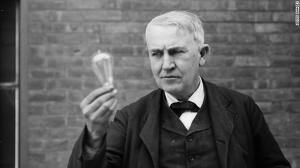 In many ways, Edison launched us on this disruptive technology path when he took the world by storm with multiple message telegraph lines, an improved telephone, stock tickers, the electric light bulb and electric utility system, the phonograph, movies, and the whole process of commercial R&D labs where raw ideas could be rapidly prototyped and brought to market. Just think what electric light meant for people the world over: Loss of whale oil and kerosene fuel oil lighting markets/industries-but people could now enjoy 16 hour days instead of 8; no longer needed to have open flames in homes for lighting using manufactured gas or other combustible gases-fires and suffocation deaths were reduced; street lights made the night much better illuminated, spurring business, night school, commerce, and leisure activities.
In many ways, Edison launched us on this disruptive technology path when he took the world by storm with multiple message telegraph lines, an improved telephone, stock tickers, the electric light bulb and electric utility system, the phonograph, movies, and the whole process of commercial R&D labs where raw ideas could be rapidly prototyped and brought to market. Just think what electric light meant for people the world over: Loss of whale oil and kerosene fuel oil lighting markets/industries-but people could now enjoy 16 hour days instead of 8; no longer needed to have open flames in homes for lighting using manufactured gas or other combustible gases-fires and suffocation deaths were reduced; street lights made the night much better illuminated, spurring business, night school, commerce, and leisure activities.
Edison’s disruptive technologies changed our standards of living, helped spur the development of emerging countries and gave us all a better life. It has been estimated today those technologies he worked on and perfected now account for one-fourth of the jobs in the world, which translates to 750 million jobs! By the way, Edison is right there in your smart phone. Recorded sound, motion pictures-two of his big inventions are there. When your phone gets tired, you recharge it via his electric utility industry system. Send a text message and realize what his work with telegraphy must have been like for that is basically what a text is without the Morse code. Technology gets upgraded, changed, merged and expanded. Like us, it evolves. Disruptive technologies are the big bumps that come along in the road of progress. Today’s disruptive inventors and entrepreneurs all share a common vision like Edison, something that is viscerally tied to our individual freedom—make the world a better place.
 Thomas Edison – Man of the Millennium – said … “I find out what the world needs. Then I go ahead and try to invent it.”
Thomas Edison – Man of the Millennium – said … “I find out what the world needs. Then I go ahead and try to invent it.”Time® is a registered trademark of Time Inc.
July 1, 2013
Guest Blog – A STEM Teacher’s Story
 At the beginning of this year, I heard my students buzzing about the game Minecraft, which allows players to build constructions out of textured cubes in a 3D generated world. This was an opportunity to infuse 21st century skills with technology in a relevant and meaningful way. Just as Thomas Edison was able to refine his ideas, making them more desirable, it was my intention to adapt a game that students were already highly interested in to make it thought-provoking and engaging.
At the beginning of this year, I heard my students buzzing about the game Minecraft, which allows players to build constructions out of textured cubes in a 3D generated world. This was an opportunity to infuse 21st century skills with technology in a relevant and meaningful way. Just as Thomas Edison was able to refine his ideas, making them more desirable, it was my intention to adapt a game that students were already highly interested in to make it thought-provoking and engaging.
I changed the premise and purpose of the Minecraft game, and combined it with a method of systems thinking known as DSRP; i.e. a theory and method of thinking, an acronym, standing for Distinctions, Systems, Relationships, and Perspectives. I challenged students to form teams and build a world from one specific perspective-one that uses algae as a fuel source. After some research on algae cultivation and biofuels, the students were able to build, virtually authentic, algae farms.
I was impressed with their ability to understand the relationships between the parts of their system [systems thinking]. This became evident when students decided to put their algae farms next to the power plant so carbon dioxide off-gases from the power plant could be used to promote accelerated algae growth, thereby keeping the off-gases from adversely affecting earth’s ozone layer.
Since this project, we have tackled problems such as disaster preparedness and the waste/trash epidemic, through similar studies. It was amazing to see middle school students attacking real-world problems. This technology has proven to be engaging and also an effective tool to facilitate skills necessary in the 21st century.

Louis Rossi
Think STEM Coach
Green Hills School
Greendell, NJ 07839
Check out this additional info!
http://minecraft.net/
http://www.pegasuscom.com/systems-thinking.html
http://www.cabreraresearch.org/
http://atc21s.org/index.php/about/what-are-21st-century-skills/
 Thomas Edison said … “The man who doesn’t make up his mind to cultivate the habit of thinking misses the greatest pleasure in life.
Thomas Edison said … “The man who doesn’t make up his mind to cultivate the habit of thinking misses the greatest pleasure in life.Time ® is a registered trademark of Time Inc.
June 18, 2013
Inventions Thomas Edison Would Love: Green Grass, Green Electricity
 In the last decade of his life, Thomas Edison was heavily involved in biomass production, creating super-strains of common plants for the harvesting of rubber-like products, an alternative to expensive naturally grown rubber from the East Indies. Now, research out of Wageningen University in the Netherlands demonstrates that plant roots can generate electricity, day or night.
In the last decade of his life, Thomas Edison was heavily involved in biomass production, creating super-strains of common plants for the harvesting of rubber-like products, an alternative to expensive naturally grown rubber from the East Indies. Now, research out of Wageningen University in the Netherlands demonstrates that plant roots can generate electricity, day or night.
Scientists there believe about 2.5 acres of Reed grass could provide power for 24 households [about 14kW], without ever harvesting the Reed grasses. Still in its technological infancy, this technique is much more efficient that traditionally used biomass energy conversion where the actual biomass must be consumed, digested, or burned to harvest a one-time shot of stored energy. Simple plant sugars and organic acids produced by the plants get secreted through the roots, broken down by bacteria, and released electrons are then harvested as electricity. It is a microbiological fuel cell process at work.
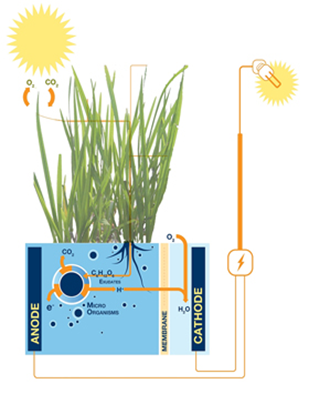 In the future, horticultural crops might be doing double duty, making products for sale, and serving as a stationary power plant—-generating electricity to serve local loads or perhaps the facility housing the plants. What about “terratecture” applications where grass/plant roofs are used to generate electricity for the structure. Different plant species could be used…even rice. Marshlands could one day become clean generating stations, maybe even supplanting solar-electric systems. Listen to what is being said about this exciting technology….”It appears that this new renewable source is economically viable, will curb the pressure on the environment and is likely to be socially acceptable. It does not pollute the horizon (like wind turbines or ugly solar panels), does not interfere with nature (like dams) and the system does not compete with agricultural land in the debate on food and biofuels.”
In the future, horticultural crops might be doing double duty, making products for sale, and serving as a stationary power plant—-generating electricity to serve local loads or perhaps the facility housing the plants. What about “terratecture” applications where grass/plant roofs are used to generate electricity for the structure. Different plant species could be used…even rice. Marshlands could one day become clean generating stations, maybe even supplanting solar-electric systems. Listen to what is being said about this exciting technology….”It appears that this new renewable source is economically viable, will curb the pressure on the environment and is likely to be socially acceptable. It does not pollute the horizon (like wind turbines or ugly solar panels), does not interfere with nature (like dams) and the system does not compete with agricultural land in the debate on food and biofuels.”
The scientists who created this technology call it Plant-e; and have high hopes for it being used where many of the planet’s inhabitants do not now enjoy the benefits of electricity. With about 6% of the world’s surface being marshland, there seems to be plenty of places for application the world over. Just think of all the marshlands you know about near your home, or have seen while traveling or vacationing.
Edison would have loved this technology; with fuel cells being the technological cousin to the battery….batteries being Edison’s most ubiquitous and perhaps most profitable product. Hey….maybe your front lawn could be used to charge up your electric vehicle at night? You never know! You listening to this discussion Tom?
Editor’s Deep Dive
http://gm-volt.com/forum/showthread.php?3149-Living-plants-can-produce-electric-energy!
http://www.wageningenur.nl/en/show/Electricity-from-the-marshes.htm
http://www.gizmag.com/plant-microbial-fuel-cell/25163/
 Thomas Edison said … “To have a great idea, have a lot of them.”
Thomas Edison said … “To have a great idea, have a lot of them.”Time ® is a registered trademark of Time Inc.
Harry T. Roman's Blog
- Harry T. Roman's profile
- 2 followers


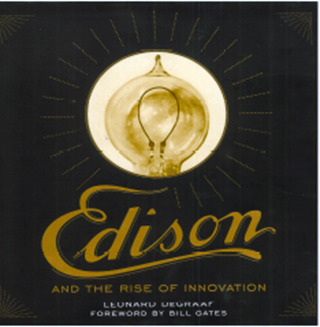
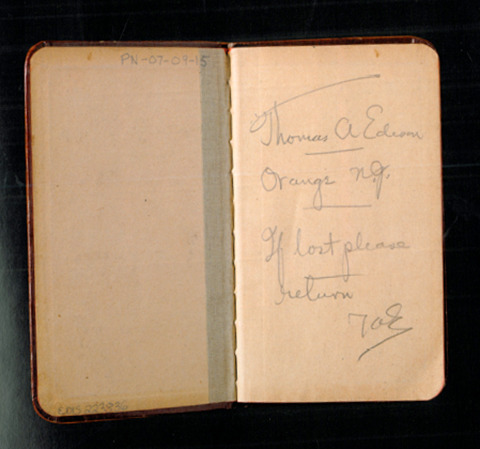
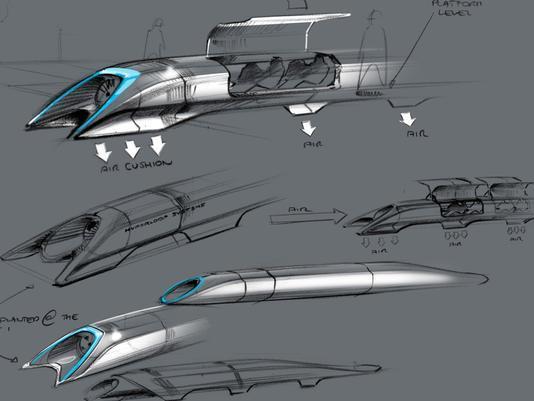

![The First Computer-ENIAC [ca. 1940s]](https://i.gr-assets.com/images/S/compressed.photo.goodreads.com/hostedimages/1380918910i/3252032.jpg)

